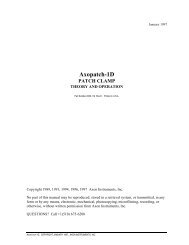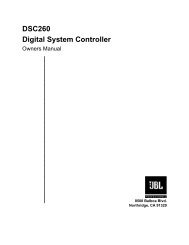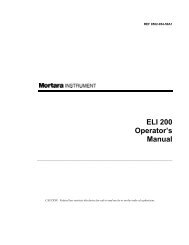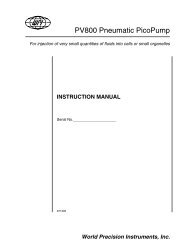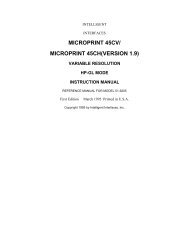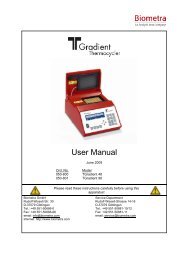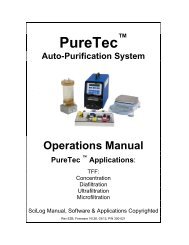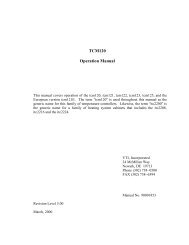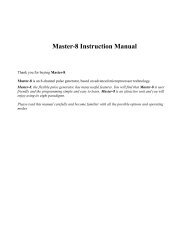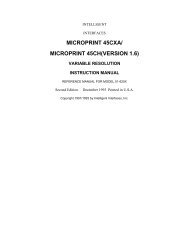Chromatotron
Chromatotron
Chromatotron
Create successful ePaper yourself
Turn your PDF publications into a flip-book with our unique Google optimized e-Paper software.
Remove the rotor from the coating arbor and use the end of a scraper blade to<br />
chisel off any sorbent remaining at the center. Rub off sorbent at the edge or<br />
on the underside of the rotor.<br />
Blow off loose sorbent dust from the surface into a fume hood. Blowing by<br />
mouth or with compressed air/nitrogen from a pinched rubber tube is<br />
satisfactory. Most electric hand-held blowers are too weak. Any dust<br />
remaining on the rotor will appear on the Teflon lid or in the solvent collection<br />
channel.<br />
The finished sorbent layer may have a few circular ruts and several bubble<br />
pits. These do not affect performance. Scuff marks and the loss of small<br />
pieces of the sorbent at the edge, have a negligible effect. Loose pieces of<br />
sorbent should be removed since they may detach later.<br />
Scraper blades are easily sanded down by rubbing on a sheet of emery paper.<br />
A 4 mm blade, for example, can be adjusted to 3.9 mm to allow scraping of a<br />
layer that is not quite the intended 4 mm thickness. Adjusted blades can also<br />
be used to clean off a thin layer of sorbent from an old or damaged layer.<br />
STORAGE OF COATED ROTORS<br />
Rotors stored in the open will pick up volatiles from the lab air but most of<br />
these wash out in the first few ml of solvent. Before mounting rotors in the<br />
<strong>Chromatotron</strong>, blow off dust that will otherwise gather around the outlet hole in<br />
the collection channel.<br />
Old rotors develop slight pH differences between the upper and lower layers of<br />
sorbent. Only the separation of acidic or basic samples is affected.<br />
In moist climates, store rotors in a cabinet with drying agents or a slow stream<br />
of dry air/nitrogen or re-dry with the lamp or lamp-bucket assembly before use.<br />
Label rotors at the edge with a pencil:<br />
COATING ROTORS USING RECIPE 6, GLUE-BOUND LAYERS<br />
A variety of common aqueous latex glues are satisfactory adhesives for silica<br />
gel (recipe 6, page 24). The most useful are clear “siliconized” (or “with<br />
silicone”) acrylic latex sealants for kitchen and bathtub caulking sold in<br />
squeeze tubes by hardware stores.<br />
29



